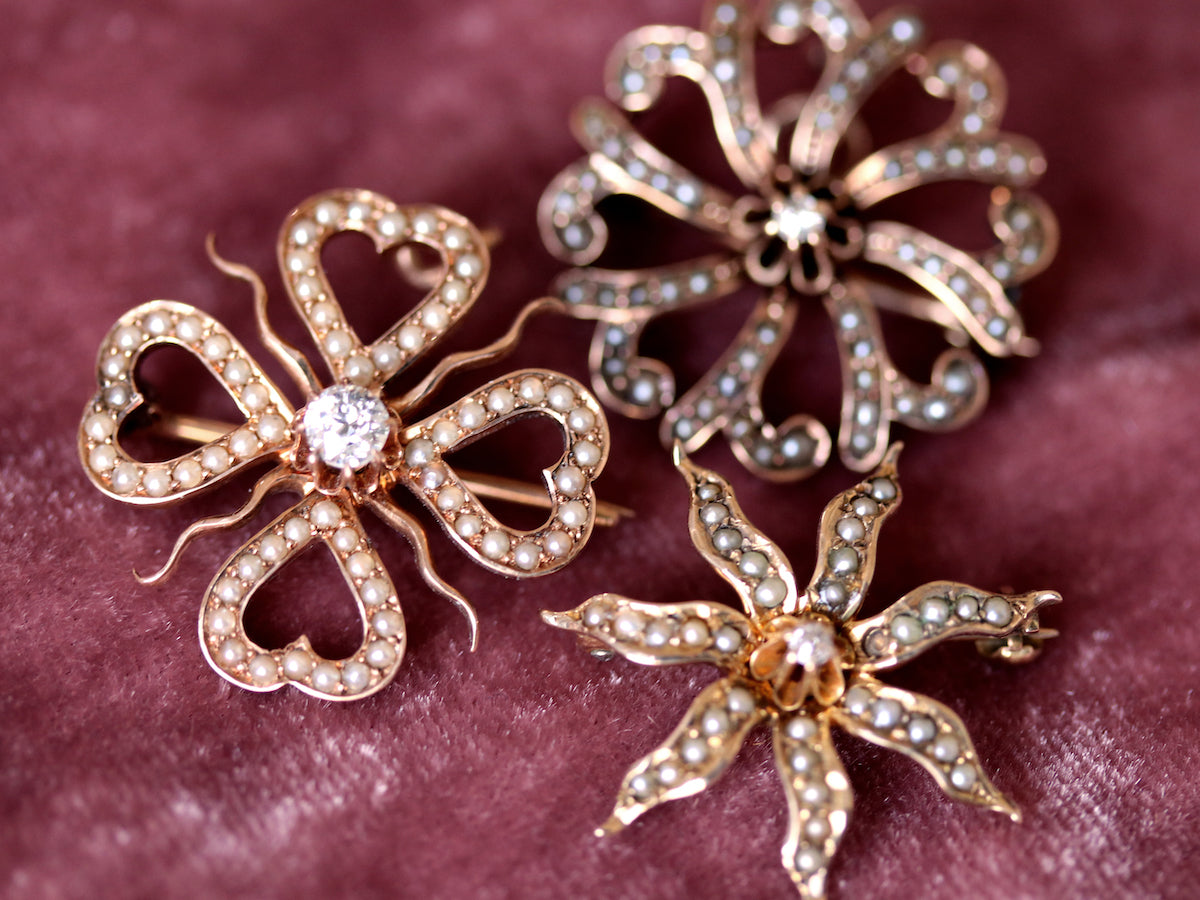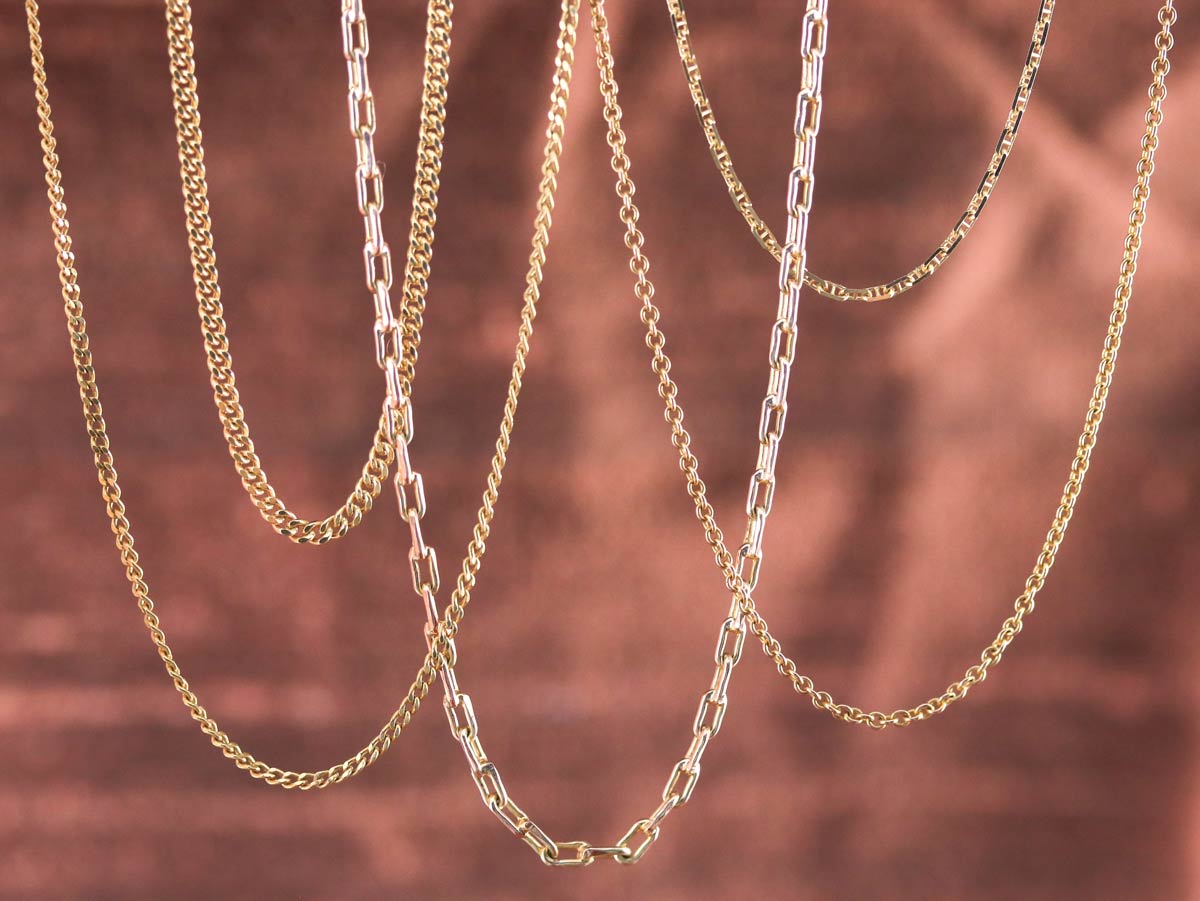GET 10% OFF! USE CODE YEAREND25 AT CHECKOUT
GET 10% OFF! USE CODE YEAREND25 AT CHECKOUT
Add description, images, menus and links to your mega menu
A column with no settings can be used as a spacer
Link to your collections, sales and even external links
Add up to five columns
Add description, images, menus and links to your mega menu
A column with no settings can be used as a spacer
Link to your collections, sales and even external links
Add up to five columns
A Beginner's Guide To Gold Jewelry
March 22, 2019 7 min read

Shopping for gold jewelry can be overwhelming for first time buyers, but with a little knowledge, you can confidently select the perfect piece. Read on to learn all about gold purity, identifying marks, and choosing the right kind of gold jewelry for you.
Types of Gold
The main differences in gold are color and karat. The color is determined by the additional metals in the gold alloy, and karat purity is determined by how much gold is in the alloy.
Karat and Purity
24K gold is pure gold, but is too soft to use in jewelry. When we talk about gold jewelry, we are typically referring to gold alloys with various purities. You should consider a variety of factors when deciding which gold purity is suitable for you. Lower karats (such as 10K) have less gold in the metal alloy, but tend to be more affordable and durable. Higher karats (such as 18K) have a higher ratio of gold in the alloy, but are softer and more expensive. 14K gold is a great middle ground between the two, which is why it is so popular in jewelry. However, don’t be afraid to go above or below that benchmark. For those who want a rich, luxurious looking gold, 18K is perfect for you. For those who are on a budget, 10K will deliver the gold you want at a lower price point.

These rings show the visual difference between different gold purities; from left, 18K gold, 14K gold, and 10K gold
Colors of Gold
One of the earliest gold alloys was invented in Ancient Egypt – a 50/50 blend of gold and silver called electrum. Today, we are still using silver in our gold alloys, with the addition of other metals to achieve certain hues.
Yellow Gold
White Gold
Rose Gold
Green Gold
As you can see, white, rose, and green golds are no less “pure” than yellow gold, it is simply the additional metal content that varies. Many people know which colors they prefer, however there are a few guidelines you can use to help you find the right shade of gold for you. People with cooler undertones in their skin tend to be complimented by white gold, while people with warmer skin tones tend to look nice with yellow gold. If you have pink undertones, you may prefer rose gold, while people with olive undertones look beautiful next to green gold. Of course, there are no “rules” when it comes to choosing metals, and you should try on lots of different kinds to find your favorite.
Antique Gold vs. Modern Gold
If you’ve ever been to an estate jewelry store, you’ve likely noticed a difference between antique gold and modern gold. Gold alloys varied widely before the 20th century, and as a result, you will see hues and tones differ from piece to piece. As standards changed, gold alloys became much more uniform, and the gold you see manufactured today varies little, if at all, across jewelry makers. In general, antique gold tends to be warmer than modern gold, more coppery and less yellow in tone. The term Hamilton Gold is used to describe this antique rosy gold. If you find that modern yellow gold tends to not look good next to your skin, you may find that antique gold, with its pink undertones, is a much more flattering shade for you.

These 10K gold Victorian brooches were all made during the same time period, yet have very different hues.
Gold Marks & Testing
The marks on your gold jewelry can tell you its karat purity. Some marks, such as “14K”, are easy for the average person to identify. If you come across three digit numbers, they refer to the amount of pure 24 karat gold contained in the metal. So gold marked “585” is 58.5% pure gold, or 14 Karat. Here are some common marks and what karat purity they indicate:
NOTE: Marks will vary depending on the region where they were manufactured, for example, marks on gold jewelry manufactured in Ireland or the UK will say “CT” instead of “K”.
Sometimes the purity mark on gold jewelry is misleading or incorrect. For example the head of a ring may be 14K, while the majority of the piece is 10K, but the ring is marked only 14K. At Market Square Jewelers, we acid test all of our pieces to ensure the purity of the metal. Acid testing, also known as scratch or touchstone testing, is a simple method that involves scratching a special stone with the gold jewelry. This deposits some of the gold on to the touchstone, and various acids are then dropped onto it. Each acid is formulated to dissolve a certain gold purity, and thus you can determine which type of gold you are dealing with based on its reaction to the acid.

Caring For Gold Jewelry
Keeping your gold jewelry in good condition isn't difficult if you follow some basic best practices. If you wear a certain piece often, we recommend you take it to a jewelry professional periodically so they can check on the wear and tear and look for any signs that a gemstone may come loose, etc.
How To Clean Gold Jewelry
When cleaning your gold jewelry, remember that you are working with a soft metal. Don’t use abrasives or harsh chemicals, as they may scratch the gold. Jewelry cleaning solution specifically labeled for use with gold jewelry, or simply diluted Windex, will effectively wash away dirt and grime. Use a soft toothbrush to get into nooks and crannies, and dry with a soft towel. Always make sure your piece is completely dry before storing. For more information about cleaning gemstone jewelry, read our blog post on jewelry care.
Rhodium Treatment
If you have white gold jewelry, you may find that it loses its brightness over time. This can be corrected with a process called rhodium plating (also known as a rhodium dip). Rhodium is a rare metal which is quite durable when used to plate other metals. Rhodium dipping your white gold jewelry will not only revitalize its brightness, but also increase its durability. Like all plating, the rhodium will wear off over time and the process will need to be repeated to maintain the look you desire. The longevity of the rhodium plating depends on how often you wear the jewelry and your body chemistry, but in general can last a year or two.
Gold Substitutes
Gold Filled Jewelry
When shopping for less expensive jewelry, you will probably come across the terms “gold filled” or “gold plated”. Gold filled means the metal contains a small proportion of gold alloy, usually 5%. If you examine the marks on a gold filled piece, you will usually see something similar to “12K 1/20 GF”. This type of mark designates the karat purity of the gold and the amount that is contained in the metal, usually represented as a fraction.
Gold Plated Jewelry
Gold plated jewelry, as the name implies, is metal that has been plated with a thin layer of gold, either electrically or chemically. Because the gold layer is so thin (sometimes 1/1000 of an inch), gold plated jewelry is quite affordable. The metal underneath the gold plating is typically copper or silver. Gold plated sterling silver is known as “vermeil,” and is typically marked to indicate the sterling silver content, either “925” or “sterling”.
Though both gold filled and gold plated jewelry offer affordable alternatives to true gold, they will wear very differently. Gold plated jewelry has a vibrant gold color, but will tarnish over time as the base metal begins to break down the gold plating. Gold filled jewelry may look less like “true gold”, but will retain its gold color over time without tarnishing. At Market Square Jewelers, we come across gold filled pieces from the Victorian Era that are still in excellent condition. Keep longevity in mind when you shop for these gold alternatives.

If you need a second opinion about the quality of your gold jewelry, or if you need repair services or are interested in rhodium plating, stop into any of our locations. In addition to these services, we will also buy your unwanted gold and precious metals (learn more here).
Also in MSJ Handbook

The Apple of Our Eye: Jade
May 29, 2025 3 min read
This powerful, ancient gemstone is still a treasure today.

Chrysoprase: The Golden Green Gem
September 17, 2021 2 min read
Subscribe
Get 10% off your next purchase!


